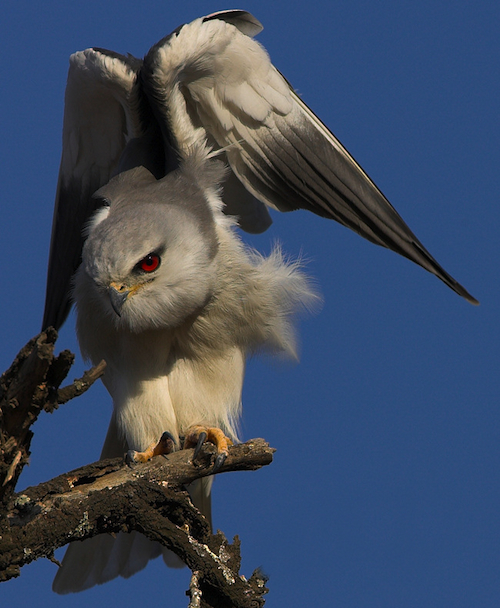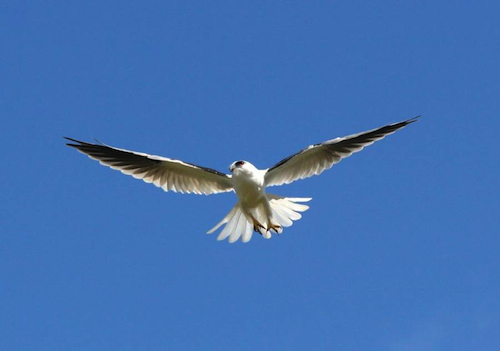
White-Tailed Kite (Elanus leucurus) photo by Patrick Cloete
I just returned from a trip to Santa Barbara, California and on the trip back home I drove up Interstate 5, through California’s central valley, which just happens to coincide with the Pacific Flyway. For those of you who don’t know, flyways are generally considered to be the main north-and-south “highways” that birds travel during their migrations. Migration routes are usually considered to be the “lanes” of individual travel from any particular breeding ground to the winter quarters of the birds that use them. No two species follow exactly the same path from beginning to end.
There are four major North American Flyways: the Pacific, the Central, the Mississippi and the Atlantic. These four flyways cover all of North America from the Arctic down through the US and blend or merge together in Central and South America. Some birds travel the full length of these flyways for a trip of over 3000 miles twice a year! Is it any wonder that they need some place to stop and refuel on their long journey?
As I left my Mom’s house in Lincoln Hills (near Sacramento, California) I spotted a White-Tailed Kite (Elanus leucurus) hovering near the local golf course looking for lunch. What a beautiful sight! The kite is a falcon-shaped hawk with a body length of 14-17 inches, more than a three foot wingspan and weighs 9-10 1/2 ounces. They favor agricultural areas, grasslands, marshes, savannas, and other open land or sparsely wooded areas from the West Coast and Gulf Coast of the United States into Central America and eastern South America.

Black-Shouldered Kite (Elanus axillaris) photo by Tony Brown
The Black-Shouldered Kite is the Australian relative of the White-Tailed Kite in the photo above. These kites prefer a diet of small mammals like mice and voles but will also occasionally hunt birds, reptiles and amphibians.
Kites search for prey from soaring or hovering flight (like the ones in the photos above), then swoop down onto their prey. Their hunting style is very similar to the American Kestrel that we love to see hovering over our fields here in northern California. Their nest is a platform of sticks in the fork of a tree or bush where they will lay 3-5 eggs. The eggs hatch out around 30 days later and the young kites fledge at 5-6 weeks of age.
As I drove further north I was able to see flocks of hundreds of migrating birds in the Sacramento Valley. Hundreds and hundreds of land birds and water fowl refueling for their migrations. Keep your feeders and water supplies full during this most important time of migration. We want our birds to grow and flourish so that they can come back and visit us all next Spring.









Comments on this entry are closed.
Hi , i was looking for websites similar to mine on about asia travel and i was directed to your post Fall Migration Is a Great Time for Bird Watching , i must say that your post is informative – I shall bookmark and link back to you
Hello
I was very much helped by the information with this article.
Many thanks at you very fascinating resource.
G’night